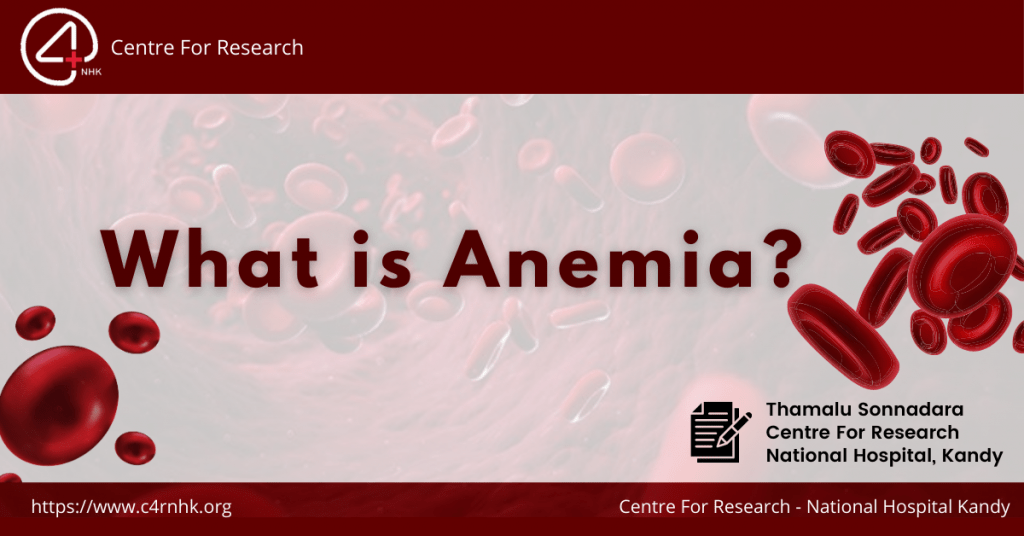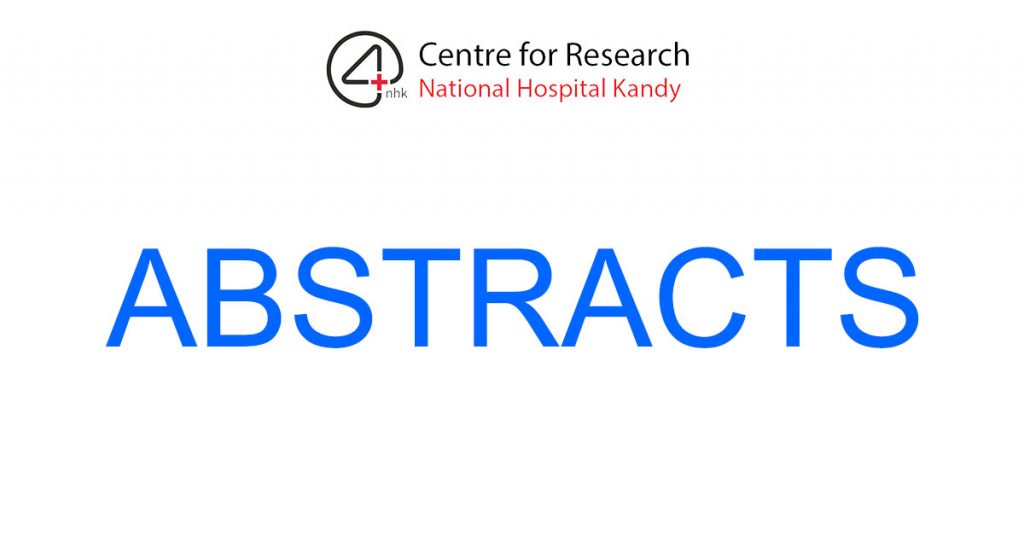What is anemia?
Anemia is the most common blood disorder that occurs due to a lack of enough healthy red blood cells (RBCs) or improper functioning of existing RBCs. RBCs contain a special functional protein called hemoglobin (Hb), essential to carry oxygen throughout your body. Anemia is clinically identified through a routine blood test and reported as a low Hb or hematocrit. When you have a low amount of Hb in your blood, it may develop an array of signs and symptoms often seen with anemia.
“Anemia is a syndrome, not a disease”
Normal Hb distribution can vary on your age, gender, ethnicities, physiological status, geographical location, etc. Therefore, anemia can be developed at any stage in your life and the possible cause may be multifactorial. WHO identifies this as a global public health problem, over one-third of the world’s population is found to be anemic. This health problem particularly affects young children and pregnant women where 42% of children less than 5 years of age and 40% of pregnant women worldwide are anemic.
Anemia can be acute or chronic and its’ severity ranges from mild to severe. According to WHO classification, anemia can be categorized into mild anemia (hemoglobin 9.0–10.9 g/dL), moderate anemia (hemoglobin 7.0–8.9 g/dL), and severe anemia (hemoglobin less than 7.0 g/dL). Some types are abundantly seen among people, while some are rare.
“Anemia can be a warning sign of a serious illness”
Treatment of anemia is important as it significantly reduces the quality of life of people with increased morbidity, including disturbances to day to day physical activities, increased falls, frailty, dementia, hospitalization, and eventually mortality.
What RBCs do?
Human blood consists of three types of blood cells and RBCs are one main type. Its’ main role is to capture O2 in the lungs and carry it through the blood to where it is needed. Also, it removes the waste product CO2 from the body when breathing out.
Human RBCs are formed mainly in the bone marrow and have an average life span of approximately 120 days. Your diet must carry enough iron, vitamin B-12, and folate for RBC and Hb production. About 0.8% is being destroyed daily at the spleen.
“Disturbance of the balance between RBC production and destruction makes you susceptible for anemia”
Normal Hb range
The normal Hb range is generally defined as,
- Male: 14-18 g/dL
- Female: 12-16 g/dL
- Pregnant female: >11 g/dL
- Elderly: slightly decreased values
- Newborn: 14-24 g/dL
- 0-2 weeks: 12-20 g/dL
- 2-6 months: 10-17 g/dL
- 6 months-1 year: 9.5-14 g/dL
- 1-6 years: 9.5-14 g/dL
- 6-18 years: 10-15.5 g/dL
Symptoms
- Pallor of the face, conjunctivae, nail beds, and palmar creases
- Fatigue or weakness
- Dizziness or lightheadedness
- Fast or unusual heartbeats
- Shortness of breath
- Pounding or “whooshing” in your ears
- Chest pain
- Cold hands and feet
- Headaches
- Generalized body pain, including in your bones, chest, stomach, and joints
- Retardation of growth for children
“So it is advisable to consult your family practitioner if you suspect that you have anemia”
Causes
Insufficient RBCs can happen if:
- The body doesn’t make enough RBCs
- Severe loss due to bleeding
- The body destroys RBCs
Risk Factors
- Being vegetarian or a diet lacking in certain vitamins and minerals. A diet in low iron, vitamin B-12, and folate increases your risk of iron deficiency anemia and vitamin deficiency anemia. WHO identifies more than 80 % of cases of anemia are due to iron deficiency.
- Intestinal disorders. Intestinal disorders can affect the absorption of nutrients in the small intestines, such as Crohn’s disease, celiac disease, colitis, etc. You are more prone to get vitamin deficiency anemia if you are suffering from one of these disorders. Also note that ulcers, especially in your stomach and small intestine may lead to progressive, chronic blood loss while depleting your body’s iron store.
- Heavy menstruation. Menstruation causes the loss of RBCs. risk of iron deficiency anemia will depend on how much blood will lose during menstruation. Therefore, women who haven’t had menopause have a greater risk than do men and postmenopausal women.
- Pregnant women must take a multivitamin with folic acid and iron, to avoid anemia. WHO reports 35–75% (average 56%) of pregnant women in developing countries and 18% of women from industrialized countries are anemic.
- Chronic conditions. There is a risk of anemia of chronic disease if you are already suffering from long term illness like,
-
-
- Kidney disease
- Cancer
- Liver disease
- Thyroid disease
- Rheumatoid arthritis or other autoimmune diseases
- Gastrointestinal diseases. Ex: Inflammatory bowel disease, Crohn’s disease, celiac disease
-
- Family history. Having a history of inherited anemia, such as sickle cell anemia, thalassemia, are at risk of the condition.
- People over age 65 are at increased risk of anemia
- Other factors. Certain other infections like malaria, blood diseases, and autoimmune disorders will increase your risk of anemia. Alcoholism, exposure to toxic chemicals, and the use of some medications like certain antibiotics, anti-fungal, Non-steroidal anti-inflammatory drugs, etc. can affect red blood cell production and lead to anemia (drug-induced immune hemolytic anemia).
Types
- Iron deficiency anemia
- Vitamin deficiency anemia
- Anemia of inflammation
- Aplastic anemia
- Anemias associated with bone marrow disease
- Hemolytic anemias
- Sickle cell anemia
Complications
- Pregnancy complications: Anemia in pregnancy can cause complications in both mother and baby. The baby may be born with low birth weight, premature delivery, also low iron reserves may lead to anemia in the newborn baby. Mothers may get postpartum depression.
- Severe fatigue leading to diminished productivity
- Heart problems: When you’re anemic, your heart must pump more blood to make the oxygen demand at heart muscles. This can lead to an enlarged heart or heart failure.
- Death
Treatment options
Many types of anemia are acute and mild and they can be easily treated. Most of the chronic conditions occur as a consequence of other disease comorbidity and you have to seek a long-term treatment plan. However, there are severe and life-threatening conditions that may need prompt and intense care.
The type of anemia, cause, and severity of the condition will determine the treatment plan. Treatments may include dietary changes or supplements, medicines, procedures including blood transfusion. If the condition is life-threatening, you have to undergo surgery for Blood and blood and marrow stem cell transplants to treat blood loss.
Stay in touch to know more about Anemia!
Resources:
https://www.who.int/vmnis/indicators/haemoglobin.pdf



